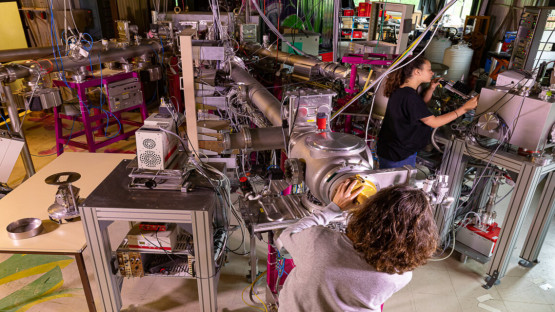The IAEA and France’s University Paris-Saclay have established a strategic partnership to enhance the use of nuclear technology in the field of characterization and preservation of cultural and natural heritage. University Paris-Saclay is the very first IAEA Atoms for Heritage Collaborating Centre.
With a new agreement signed earlier this month, University Paris-Saclay will provide support to the IAEA and its Member States to foster novel, advanced nuclear science and technology applications for sustainable heritage preservation, utilizing synergies and building strong partnerships between experimental sciences and humanities.
“The comprehensive, multidisciplinary approach of this collaboration brings an added value to the field of heritage sciences and can benefit international efforts to preserve cultural and natural heritage,” said Najat Mokhtar, Deputy Director General and Head of the IAEA Department of Nuclear Sciences and Applications, at the signing ceremony of the agreement.
University Paris-Saclay is among the top universities in the world in the area of heritage sciences. With exceptional infrastructure, including state-of-the-art facilities and 54 scientific laboratories in heritage sciences, it conducts excellent research and offers a multidisciplinary and collaborative framework in heritage sciences and preservation.
“Establishing an IAEA Collaboration Centre dedicated to heritage research, training and protection will play a key role in promoting the peaceful and sustainable use of nuclear applications for the benefit of the global society,” said Sylvie Retailleau, President of the University Paris-Saclay.
Nuclear analytical techniques, such as accelerator-based techniques, help experts to examine with high accuracy the materials cultural and natural heritage objects are made of, as well as to determine their age and origin. This analysis provides key information on how to optimally conserve and restore valuable and often non-replaceable artefacts. Under the newly signed collaboration agreement, the IAEA and University Paris-Saclay will work together to promote the use of nuclear technology in the field of characterization and dating of cultural assets.
The IAEA has been leading international efforts to develop guidelines for examination procedures of unique artefacts with accelerator-based techniques, to avoid potential damage, which is a major concern of curators, art conservationists and other stakeholders. Developing methods for safe analysis of cultural and natural heritage objects using nuclear technologies is another key area of the IAEA – University Paris-Saclay collaboration.
The two organizations will also join forces to advance the use of nuclear techniques to analyse and share data in accordance with Open Science strategies; educate and raise awareness among the public and future generations about heritage issues; and combat the illicit trafficking of heritage objects.
“This agreement will help strengthen the collaboration between the IAEA and French experts, while offering new prospects for technical cooperation with the least developed countries,” said Ambassador Xavier Sticker, Permanent Representative of France to the United Nations and International Organisations in Vienna. “A next step is to widen the circle of beneficiaries to major cultural or scientific institutions as well as to governmental administrations and economic operators, such as auction houses and antiques dealers.”






